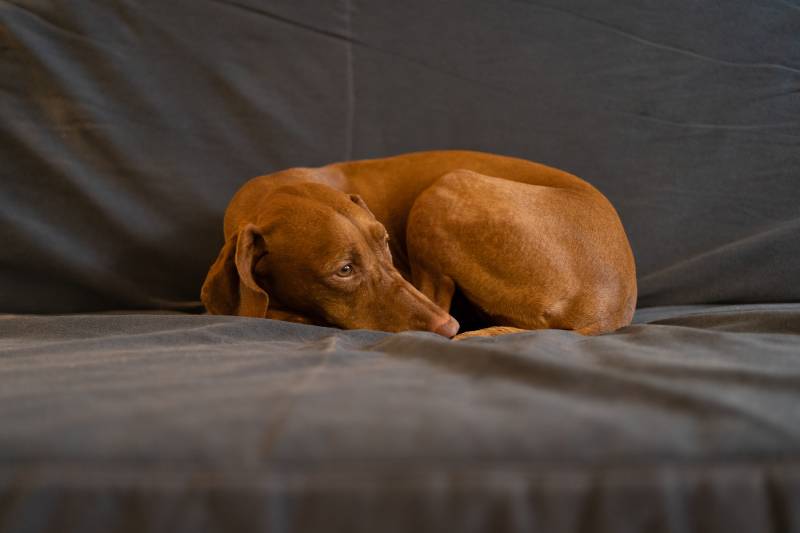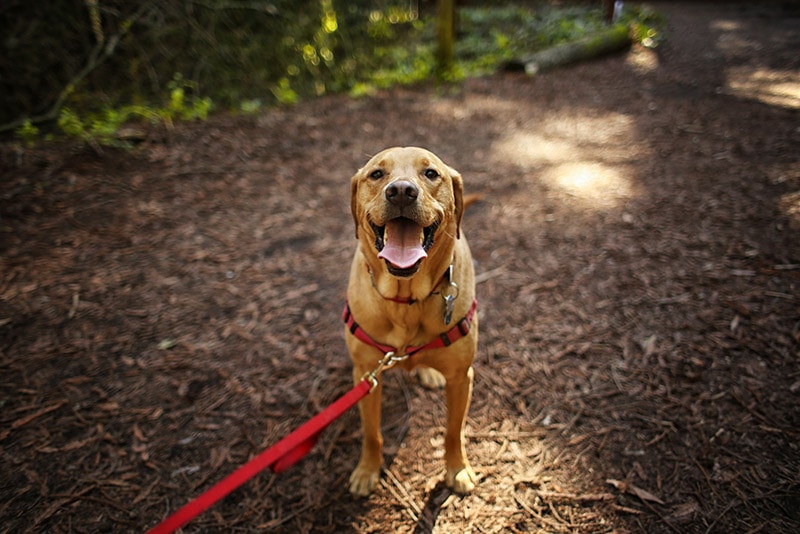27 Different Havanese Colors (With Pictures)
By Jordyn Alger
Updated on
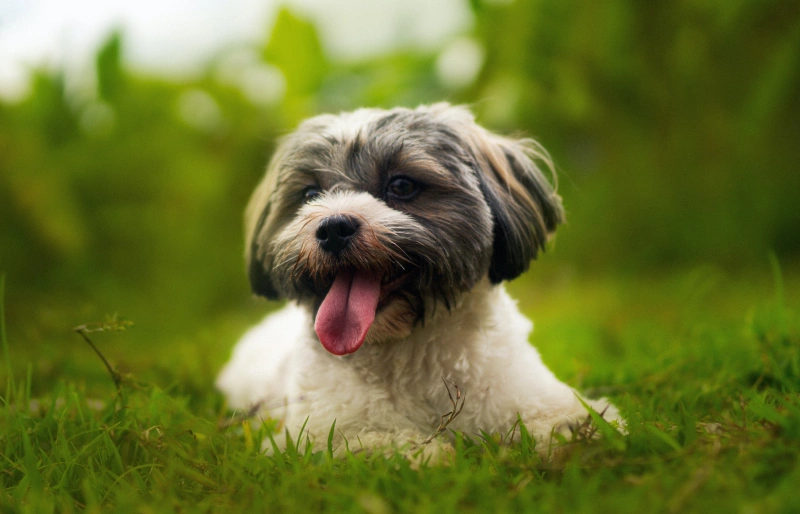
The Havanese dog is a cheerful little canine that is native to Cuba. These vibrant, extroverted dogs are growing in popularity in the United States due to their gorgeous, silky coats. The Havanese’s special coat comes in many unique colors and patterns. If you are considering adding the Havanese to your family, you will certainly want to know some of the incredible color varieties you can choose from. We will discuss 27 Havanese colors, so keep reading to learn more.
The 27 Havanese Colors

1. Sable
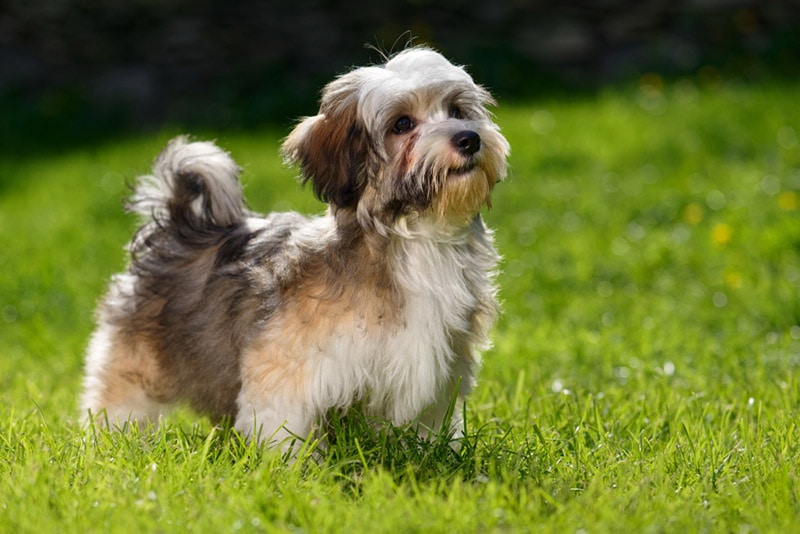
Havanese dogs have light fur with dark-colored tips when they are sable. The darker tips are usually black, brown, or another similar shade. The lighter fur underneath is often gold, tan, white, or something like it.
Sable Havanese dogs do not always have uniformity across their entire coats. In many instances, the sable tip markings will be dense in some areas and more sparse in others.
2. Parti Belton
Parti Belton is a fun coloration pattern, not just because it has a cool name! When Havanese dogs have this color, they have spots of hair that are colored differently from the cluster of hair they appear in. Often, these spots of hair are darkly colored, such as brown or black. The clusters of hair are usually lighter in color.
As interesting as this color is, it can sometimes be challenging to determine whether or not a Havanese dog has the parti belton coloration because the breed has such long hair.
3. Irish Pied
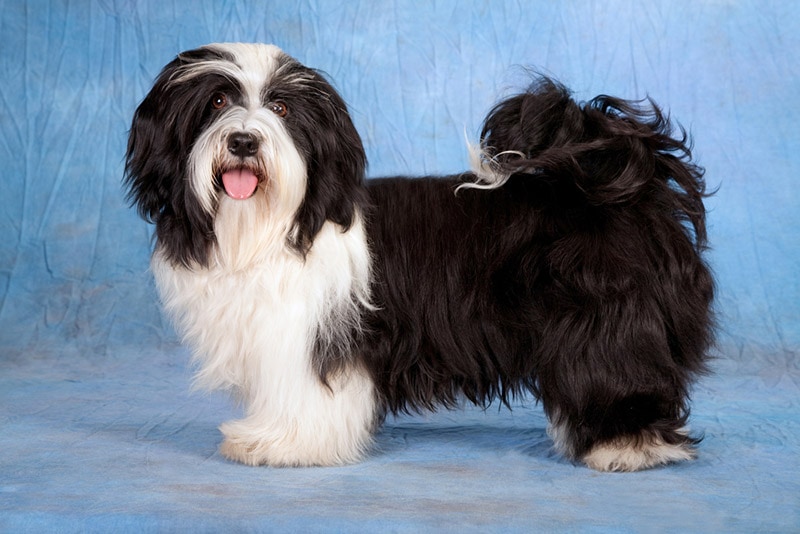
The Irish pied color is often mistaken for other colors on the Havanese dog. White fur covers over half of the body of an Irish pied Havanese dog. That is not always the case with other breeds, so the confusion is understandable. With the Havanese, the amount and location of white fur are unpredictable.
4. Parti-Color
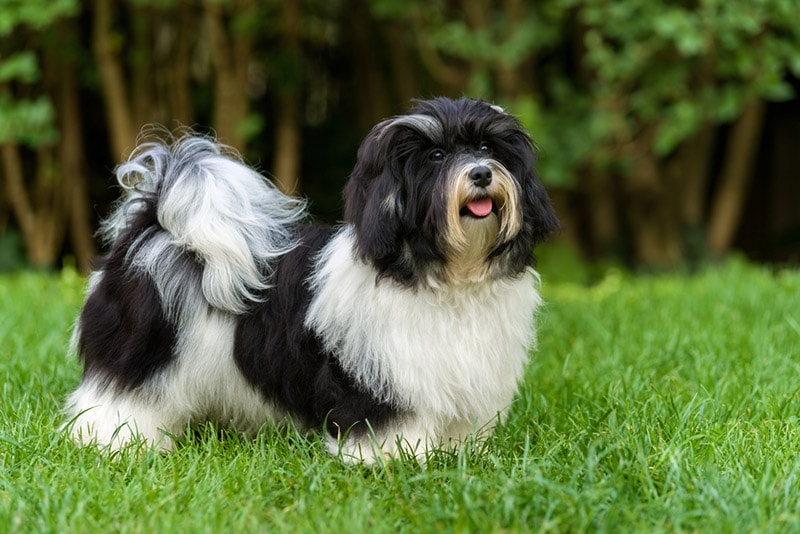
Another Havanese coloration that is commonly miscategorized is the parti-color Havanese. Parti-color Havanese dogs are often mistaken for Havanese dogs with white markings. However, there are notable differences between the two.
First, the particolored Havanese have less white fur than those with white markings. Second, parti-colored Havanese are more unpredictable when it comes to the distribution of patterns.
5. White Markings
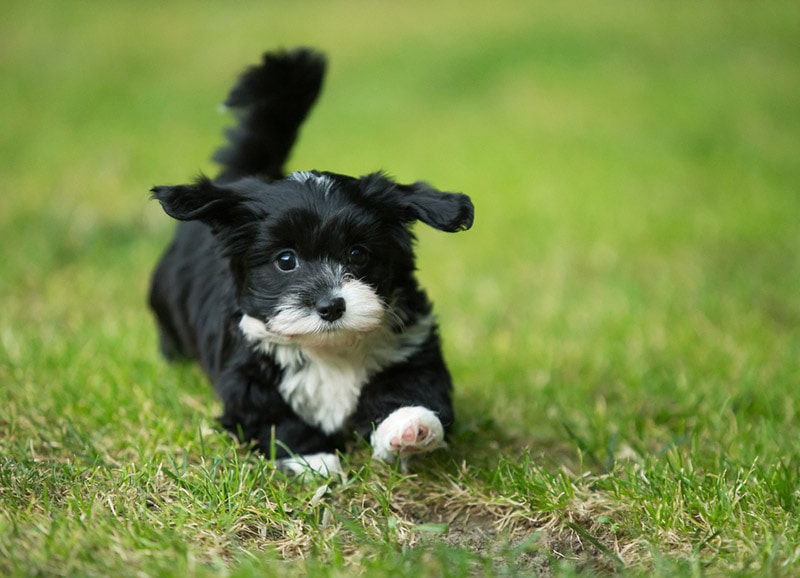
Havanese dogs with white markings tend to have a strong presence, as the white fur covers many areas. The white hair is typically on the belly and chest of the Havanese, but it can spread to the neck, face, or paws.
Although the white markings cover many areas, they do not take up most of the Havanese’s coat. Most of the coat will be covered by a brown or black color.
6. Tan Markings
https://www.instagram.com/p/CieLaCquCxm/?utm_source=ig_web_copy_link
Tan markings, like white markings, cover a very small area on the Havanese. However, tan markings cover even less of the Havanese’s body than white markings. The tan markings usually appear on the face in a mask shape, including the mouth and small patches over the eyes. Some Havanese with tan markings also have tan patches on their paws or neck.
7. Cream Markings
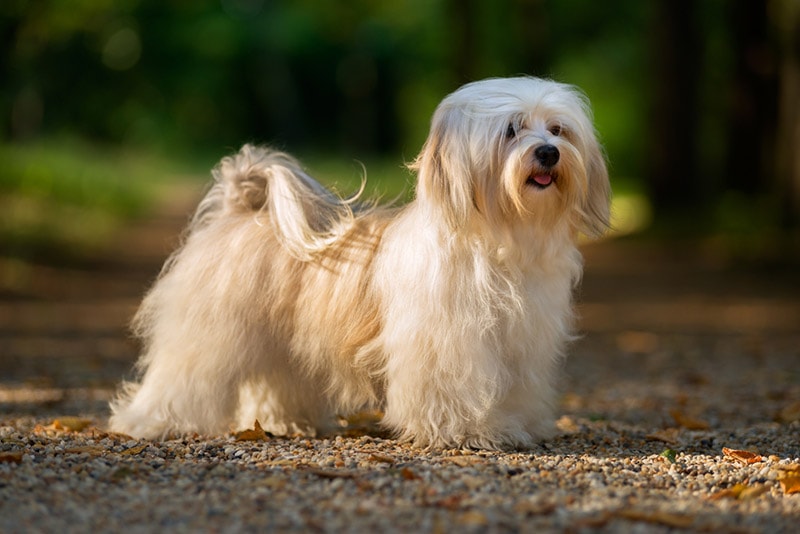
Havanese often have cream markings in combination with white fur, and they only cover a limited area. This usually includes the face, the tips of the ears, the paws, or the neck.
The cream color may vary between dogs. Some Havanese dogs will have dark, almost tan-like cream markings, while others may appear pale and yellowish.
8. Silver Markings
Silver markings on the Havanese can be so subtle that even professionals miscategorize them as white markings. The silver markings are so light and shiny that they can be deceptive. However, when carefully observing a Havanese with silver markings under good light, you should be able to distinguish the white from the silver, which will appear closer to gray in color.
These silver markings will often cover small areas of the Havanese’s body, such as the face, paws, and neck.
9. Blue
Blue is among the rarest colors that a Havanese dog can develop. Genetically, it is a result of diluting the genetics in black Havanese dogs. The blue Havanese can be difficult to describe because their appearance may change drastically throughout their lives. Their coat will generally appear to be a pale, diluted version of black. However, their fur may appear silver when they are younger.
10. White
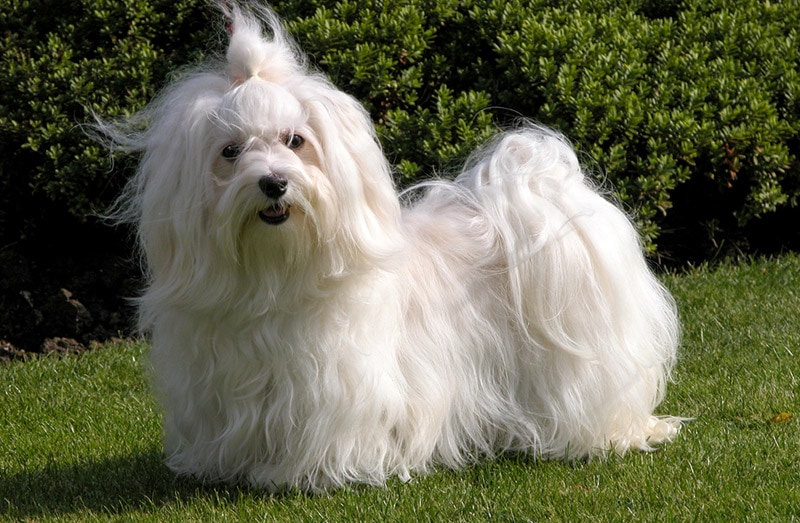
Entirely white Havanese dogs are one of the breed’s most popular and easily recognized versions. This color was among the first seen in the breed, establishing it as a classic color. Typically, the white Havanese is covered entirely in white fur. However, some white Havanese dogs have a few patches of tan or red hair around the paws or muzzle.
11. Silver and White
The silver and white Havanese is a unique variation. The distribution of colors is eye-catching, giving it a salt-and-pepper appearance that many dog owners love.
For the most part, the coat is covered in a silver-gray color. However, there are speckles of white throughout that keep the fur looking interesting. In some cases, the white fur may even cover as much of the body as the silver hair does. The white fur can cover the face, chest, limbs, and neck in these instances.
12. Red and White
Havanese dogs that are red and white are covered in a red coat that is decorated with white markings. Sometimes, these markings are predictable. This includes markings around the neck, face, paws, and chest. In other cases, the markings may be distributed entirely randomly. Occasionally, a red and white Havanese will be primarily white with the occasional red marking.
13. Red

The red Havanese dog has a beautiful, reddish-brown coat that covers the entire body. The intensity of the red color can vary, as some red Havanese dogs are a vivid, rusty color while others are more earthy in appearance.
Red Havanese dogs are one of the more common coat colors at dog shows. Because of this, the red Havanese dog is steadily growing in popularity.
14. Gold
The gold Havanese can be tough to distinguish from other colors, such as tan or fawn. Usually, the gold Havanese dog’s coat has a richer, more yellowish undertone than the tan or fawn coats. This undertone gives the gold Havanese a glowing appearance.
15. Fawn
Havanese dogs with fully fawn coats can vary more than other fawn-colored dog breeds. While the average fawn dog is pale, perhaps even diluted in color, the fawn Havanese can be vivid and intense. The beige-like color can really shine with the Havanese’s long, wavy hair. Even so, many fawn Havanese dogs can be just as pale as the average fawn dog.
16. Cream

Sometimes, the cream Havanese is mistaken for plain white Havanese. However, the cream color is a shade of brown.
By carefully examining the cream Havanese, you’ll notice that the fur is uniform. The cream can range in intensity from vivid shades of gold to gentler off-white hues. Like the blue Havanese, the cream Havanese can change color as it ages.
17. Tan and White
Although tan and white may not seem unique, tan and white Havanese dogs are rare! When it comes to the Havanese dog, the bicolor variation is also unusual—most bicolor Havanese dogs have minimal white fur, but for the tan and white Havanese, white is the predominant color.
The tan spots are typically found on the limbs, belly, and chest. The shade can range from a solid, almost brown tan to a softer shade that resembles yellow.
18. Chocolate and White

The chocolate and white Havanese is easily one of the most popular color variations of the breed. This variation generally has a consistent marking distribution. Most of the coat is dark brown, while white spots cover the face, paws, neck, and chest. However, in some instances, the Havanese’s white fur may take up larger areas.
19. Chocolate
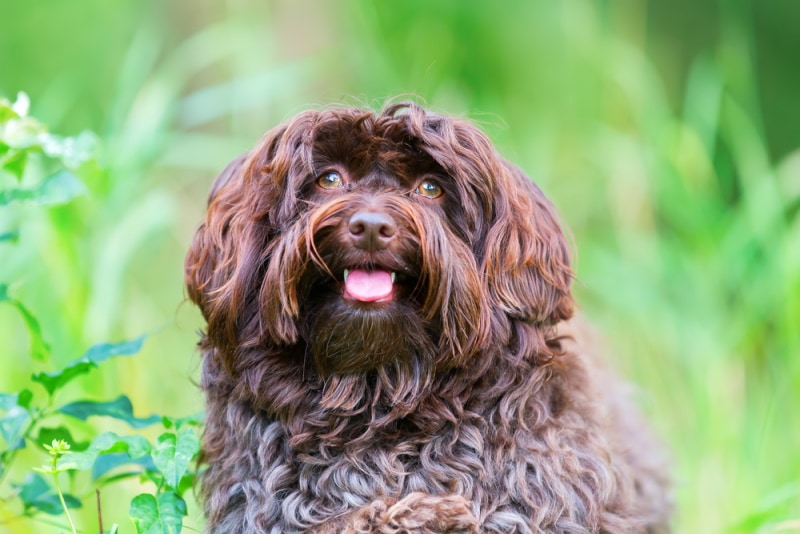
A chocolate Havanese dog will have a dark brown coat that covers the entire body. There should be no markings in any other color. Yet, you may spot discolored patches of fur. Around the chest, belly, or paws, the chocolate fur may be lighter than the rest of the body. This is typically seen in younger puppies, and by 2 years of age, the chocolate Havanese should be settled into its permanent appearance.
20. Black and Tan
The black and tan Havanese dog is a beautiful yet uncommon variation. Black is the dominant color of the coat, showing up on most parts of the dog’s head, torso, tail, and limbs. The tan patches of fur tend to be seen on the muzzle and over the eyes. It may also appear around the paws, chest, or neck.
21. Black and Silver
Havanese dogs with black and silver coats can be difficult to categorize because there is such a wide variation in how the black and silver colors will manifest.
Generally speaking, the black and silver Havanese dogs have predominantly black coats. The silver markings are usually limited to the paws and face. However, some black and silver Havanese dogs have splotches of color everywhere.
22. Black
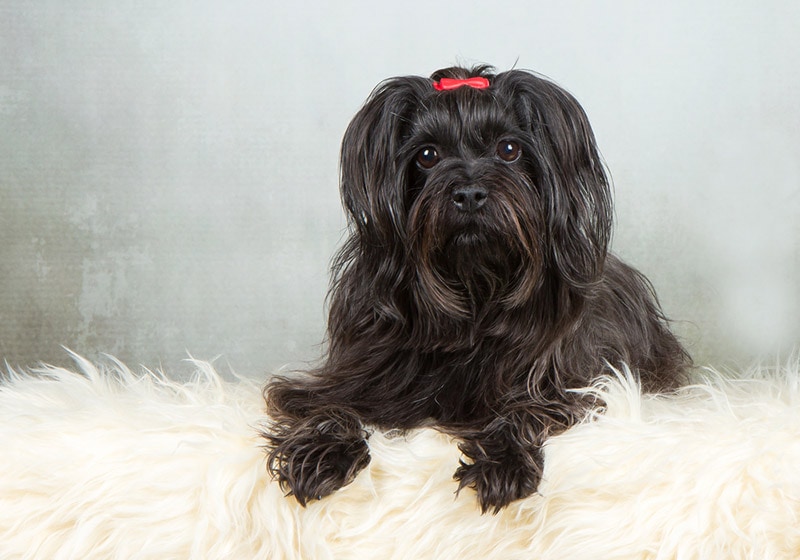
This Havanese dog is entirely covered in black fur. There are no markings on this dog, so there are no opportunities for other colors to sneak into the coat. A feature that makes the black Havanese somewhat unique is that it will not change color as it grows older. Most Havanese dogs change color slightly, so the black Havanese’s consistency is interesting!
23. Brindle
Brindle is a unique coloration pattern that creates dark stripes against a lighter color. The dark streaks are typically black or brown, and the lighter coat beneath it is typically a gentler shade of brown. The lovely stripes can be difficult to see with the Havanese’s long fur. To fully appreciate the brindle Havanese’s beauty, you may need to trim away some of the extra hair. The brindle gene is rare.
24. Merle
Merle is a unique pattern where dogs will have dark, unpredictable speckles all over their body. These speckles will normally be black, although some merle dogs have had speckles that are brown or red. The color of the coat beneath the spots tends to be a lighter color, such as silver, gray, or white.
Another unique feature of the merle coloration is that some Havanese dogs will have bright blue eyes. However, if irresponsibly bred, the merle Havanese can have serious problems such as deafness or blindness. That is why two merle dogs are never meant to be bred together.
25. Apricot
The apricot Havanese is a gentler shade of brown with light undertones of red. It is often sunny in color. Apricot can be a difficult color to develop in the Havanese dog since it is a recessive gene, and it can also be difficult to maintain since it tends to fade in the sunlight. If you have an apricot Havanese that spends lots of time outside, you can expect the vivid color to fade over time.
26. Silver
Silver coats are incredibly rare, but if you can find a silver Havanese, the search will be well worth it. The silver Havanese is incredibly beautiful, with colors ranging from platinum, pewter, and dark gray.
Silver Havanese puppies are born with black coats that begin to lighten around 4 weeks old. It will be difficult to tell which shade of silver your Havanese will take until it is a year old.
27. Tricolor
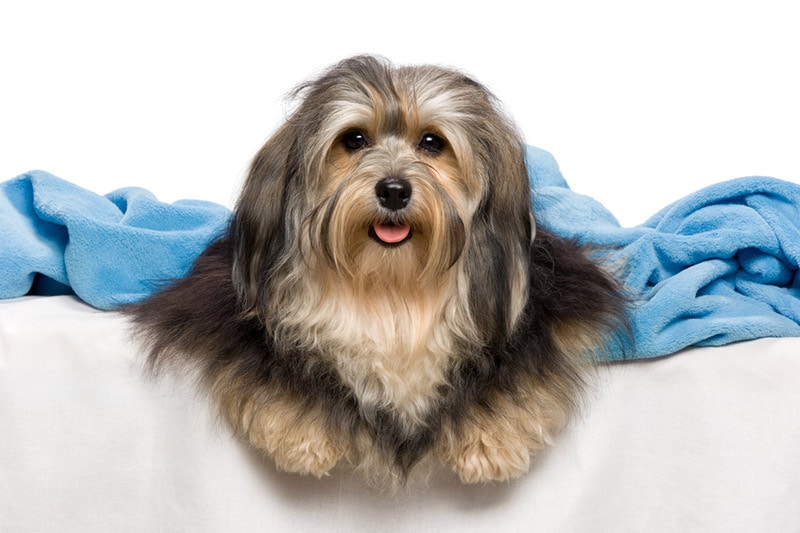
Havanese dogs can be seen in one, two, and even three colors! The tricolor Havanese is a dog with three colors on its coat, such as black, white, and brown. However, colors like blue and silver may also appear. This color variation makes it unique, and no two tricolor dogs are entirely the same.
Conclusion
The Havanese dog is a unique breed with various color and pattern combinations. If you are considering bringing the Havanese dog into your family and one of these colors has appealed to you, start by visiting your local animal shelter or searching for a reputable breeder.
Regardless of its appearance, the Havanese is a remarkable companion.
See Also:
- Golden Havanese (Golden Retriever & Havanese Mix)
- Havanese Dog Breed: Pictures, Info, Temperament & Traits
Featured Image Credit: Dennis Bautista, Pexels


